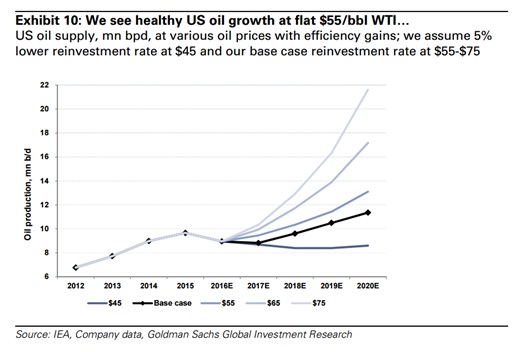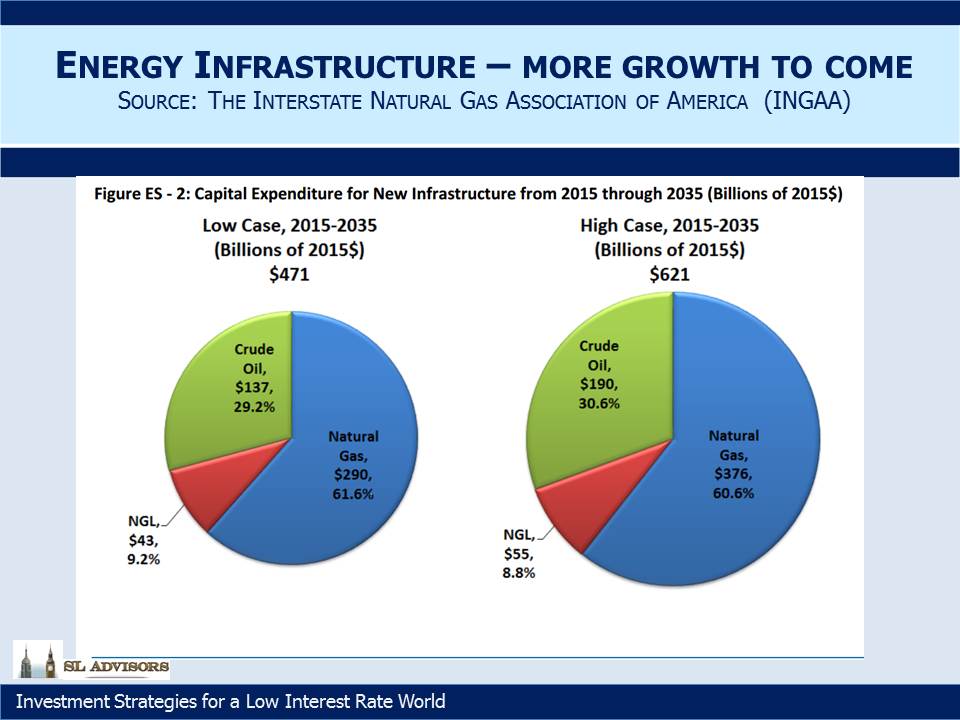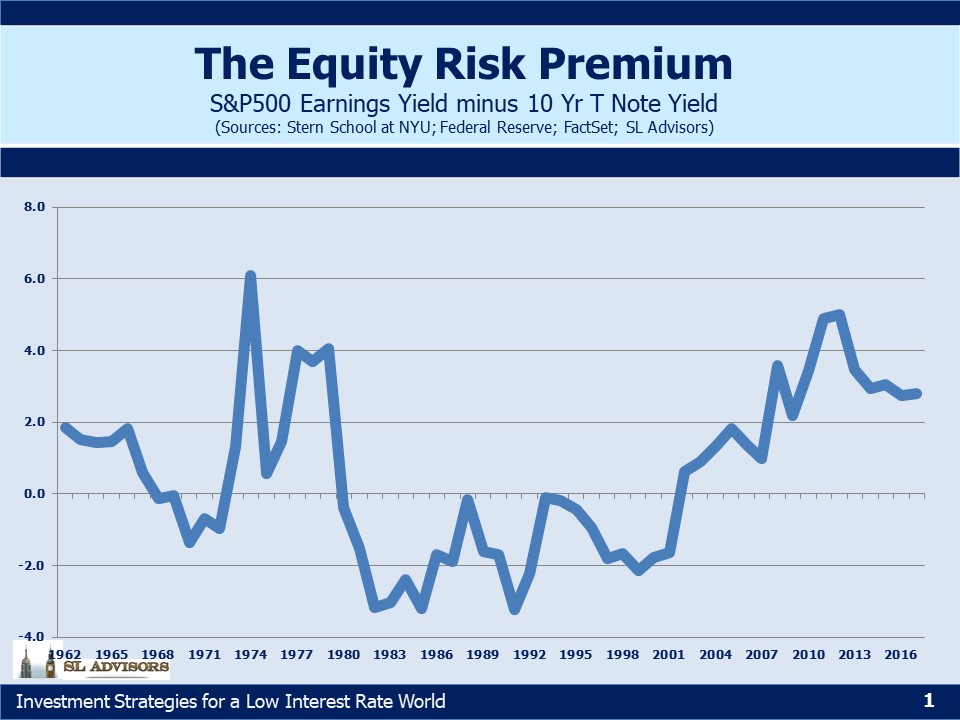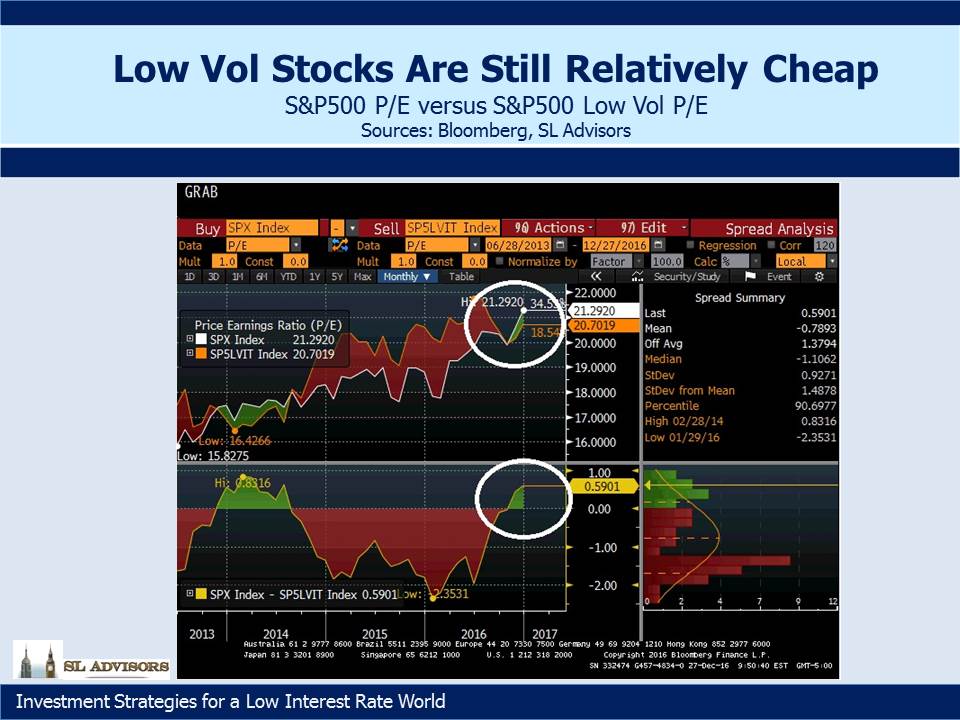| Back in 2014 they were unlikely adversaries. Saudi Energy Minister Ali Al-Naimi, and Pioneer Natural Resources (PXD) CEO Scott Sheffield (pictured below) had both made their careers in the oil business. They had each spent formative years abroad, with Al-Naimi attending Lehigh University and Sheffield going to high school in Iran (his father worked for Atlantic Richfield). Both were dedicated to maximizing the value of the fossil fuels they controlled, and had hunted together (a common pastime for oilmen).

But t he success of horizontal drilling and hydraulic fracturing (“fracking”) in the U.S. was releasing increasing amounts of crude oil from hitherto impenetrable porous rock. A consequence was that from 2011-2014 fully all of the increase in global demand for crude oil had been met by North American production (see Listen to What The Oil Price is Saying). This was hurting prices and reducing OPEC’s market share. Al-Naimi concluded that the interlopers were vulnerable to a drop in prices that would expose their high cost structure. Pioneer was one of the biggest producers of shale oil. They had been deemed “The Motherfracker” by hedge fund manager David Einhorn who likened their low return on capital to, “…using $50 bills to counterfeit $20s.” Scott Sheffield’s business and others like it were increasingly at odds with OPEC, and Al-Naimi decided they needed to be stopped. he success of horizontal drilling and hydraulic fracturing (“fracking”) in the U.S. was releasing increasing amounts of crude oil from hitherto impenetrable porous rock. A consequence was that from 2011-2014 fully all of the increase in global demand for crude oil had been met by North American production (see Listen to What The Oil Price is Saying). This was hurting prices and reducing OPEC’s market share. Al-Naimi concluded that the interlopers were vulnerable to a drop in prices that would expose their high cost structure. Pioneer was one of the biggest producers of shale oil. They had been deemed “The Motherfracker” by hedge fund manager David Einhorn who likened their low return on capital to, “…using $50 bills to counterfeit $20s.” Scott Sheffield’s business and others like it were increasingly at odds with OPEC, and Al-Naimi decided they needed to be stopped.
So it was that in late 2014 the Saudis shocked the oil market by promising to increase production into an already oversupplied market, rather than adopt their familiar role of swing producer, modifying their own output to smooth price swings. They calculated that lower prices would bankrupt large swathes of the U.S. shale oil industry, eventually cutting production and allowing prices to return to the $100+ levels necessary to support Saudi Arabia’s budget. “We are going to continue to produce what we are producing, we are going to continue to welcome additional production if customers come and ask for it,” al-Naimi said.
What followed over the next two years is one of the most extraordinary stories of private sector innovation in the biggest, most dynamic economy the world has ever seen. Crude prices plummeted, falling as low as $26 a barrel on February 11th, 2016. Facing an existential threat to their businesses, Pioneer and many companies like it drove production costs down relentlessly, bringing break-evens down to levels few had thought possible.
This is most obvious in metrics such as the rig count, whose 75% fall led to only a relatively modest drop in production as the best rigs were employed for shorter periods at lower rates. Moreover, individual well productivity improved as longer laterals focused on sweet spots increased output. The composition of proppant was refined. Sand keeps the cracks open that fracking creates, and finer grains in greater volumes further increased output. Service providers were squeezed to reduce their costs and idle less efficient equipment. The industry staggered for a while under the body blow of lower prices, and many overleveraged companies failed. But overall it stayed on its feet, adapted to the new world and maintained oil production at levels substantially higher than prior to the Shale Revolution.
Although prices bounced from $26, they remained persistently lower than many OPEC countries (including most notably Saudi Arabia) needed to balance their budgets. In 2015 the Saudis ran a deficit equal to 15% of GDP and resorted to issuing bonds to fund expenses. Sharp spending cuts followed. Drilling budgets around the world were slashed, and an estimated $1TN was cut from planned capex out to 2020. As the failure of Al-Naimi’s strategy became apparent, he was replaced in May of 2016. The Saudis still plan to sell shares in their giant oil company Saudi Aramco, so in choosing its chief, Khalid Al-Falih, as their next Oil Minister, they picked someone acutely sensitive to the need for a higher price.
OPEC’s recently announced production cutbacks, whether or not they are in fact implemented, are an admission of defeat. As many of the world’s biggest oil producers gathered in Vienna to plot global output and prices, the biggest disruptor was absent. America has no view on global oil production. Crude oil prices remain around half of their highest levels in 2014. Scott Sheffield heads into retirement with PXD’s stock close again to its all-time high, and claims to have production costs as low as $2 per barrel for Permian Horizontal wells.
 Shale oil and gas production are upending the energy markets. The U.S. is not just the leader in this new technology, it’s virtually the only game in town. Oil, natural gas liquids and natural gas are known to exist in porous rock all over the world, notably in China and Argentina. America’s dominant position reflects many inherent free market advantages in the world’s biggest economy which are not sufficiently present elsewhere. Shale oil and gas production are upending the energy markets. The U.S. is not just the leader in this new technology, it’s virtually the only game in town. Oil, natural gas liquids and natural gas are known to exist in porous rock all over the world, notably in China and Argentina. America’s dominant position reflects many inherent free market advantages in the world’s biggest economy which are not sufficiently present elsewhere.
Start with a large energy sector already adept at exploiting conventional resources, with a deep pool of skilled labor and long history of technological improvement. Add to this: access to capital from the world’s biggest capital market; a strong entrepreneurial culture; existing energy infrastructure that can be modified and enhanced to service these new regions of output; ample water and specific grade sand supplies (needed for fracking), often conveniently located; mineral rights that belong to property owners, unknown in other countries but taken for granted in the U.S., which builds community acceptance of drilling activity that creates local wealth.
Natural gas from U.S. shale was developed under a much higher price regime which allowed time for scale that could lower costs as global Liquified Natural Gas supplies weighed on prices. Similarly, the development of crude oil sourced from shale started when prices were higher, so the industry was subsequently mature enough to adapt to falling prices. Horizontal drilling and hydraulic fracturing of rock could not have developed as they did under today’s hydrocarbon price regime. OPEC’s strategy was correct but several years too late. There is no going back.
Only the U.S. combines all these advantages. The result is that cheap natural gas now produces more electricity than coal, and in November for the first time we became a net exporter of natural gas. We’ve even shipped it to the United Arab Emirates (see Coals to Newcastle), because it’s cheap enough to cover the transportation costs. Crude oil production has turned back up, and the Permian Basin in west Texas (Pioneer’s main area of production) may lead the U.S. to being the world’s biggest oil producer, with both Goldman Sachs and JPMorgan forecasting meaningful increases in output over the next five years at current prices. The world needs U.S. supply. Global consumption is currently around 95MMBD (Million Barrels Per Day). Existing plays suffer annual depletion of around 5% (around 5 MMBD) and new demand is another 1-1.5MMBD. So 6-6.5MMBD of new supply is needed, and the $1TN of capex reductions noted earlier mean it will be coming from fewer places.
Bear in mind that this all happened with an Administration regarded as hostile to domestic production of fossil fuels, at least by the senior executives in that industry. The strong growth in production during Obama’s eight years in office either disproves this view or demonstrates resilience in spite of it. Nonetheless, it’s hard to imagine a more supportive scenario than the one presented by the incoming Administration. Kelcy Warren, Energy Transfer Equity (ETE) CEO, can’t wait for Trump to lift the remaining obstacles to completion of the $3.6BN Dakota Access Pipeline, held up by protests and a late White House intervention in the permitting process.
Connections with the energy industry are conspicuous among Trump’s early cabinet picks. Former Texas governor Rick Perry is a director of Energy Transfer Partners (ETP), a position he will no doubt relinquish as he heads up the Department of Energy. As a presidential candidate four years ago Perry planned to close the department. It was one of three Federal agencies he planned to close, and in a delicious twist was the one he famously forgot during a debate (his “Oops” moment). As its head, once he finds his way there he will presumably exercise a light touch in overseeing the energy sector. America’s foreign policy will be led by Exxon Mobil (XOM) CEO Rex Tillerson. After these and other cabinet picks are approved by the Senate, the shift in public policy at the Federal level in support of domestic energy could be dramatic.
Moreover, in crude oil the U.S. is now the global swing producer. To see why, consider the thinking behind the $1TN in cuts to exploration budgets (see Why Oil Could Be Higher for Longer). Conventional oil projects involve a large up front capital commitment with a long payback period, during which the overall profitability will be exposed to oil prices. Since the futures market only offers liquidity out to 2-3 years, oil drillers are basically long the oil market.
Assessing this risk now includes the 2014-16 oil price collapse which damaged the IRR on many prior investments. A previously uncontemplated oil price is preventing many new projects from being funded, because it might repeat. Yet the U.S. shale producer, ostensibly the instigator of the excess supply, pursues many small projects with minor upfront expense (a horizontal well now costs on average less than $5MM) mitigating individual risk. U.S frackers may forego the significant cost of completing a drilled well in response to lower prices, resulting in an inventory of DUCs (Drilled UnCompleted wells) awaiting higher prices. High initial production rates and faster depletion mean output can be hedged.
These producers are better able to protect themselves from the very swings in price that they themselves might create. The other end of the spectrum is Canadian Tar Sands (the Canadians prefer to call it Oil Sands), where production continued even at February’s lows. This generated operating losses before adding in corporate overhead and an appropriate return on capital. Shutting down a tar sands project, with its buried pipes carrying steam to heat the bitumen, risks the infrastructure freezing and cracking. They had little choice but to continue production. New tar sands projects are unlikely. The nimble producer is the swing producer.
U.S. Energy Independence in both natural gas and crude oil are within sight. Furthermore, natural gas liquids (such as Ethane and Propane) are supporting a new spurt of growth in Chemicals as cheap domestic inputs drive production of plastics for clothing, electronics, food packaging and aerospace equipment.
To state the obvious, we believe the outlook for U.S. energy is very good. And yet, investing in the infrastructure to support this positive outlook is so much more attractive than holding E&P companies. PXD may well go on to make its owners increasingly wealthy, but is in a cyclical business in which financial disaster is one price collapse away. The safer bet is surely the owners of the pipelines, storage, processing facilities and related infrastructure without which none of this potential can be realized. Pipelines are often irreplaceable once built, as communities grow up around and over them. The imperative to connect to the existing network creates insurmountable barriers for would-be new entrants. The impact on midstream businesses from certain of their E&P customers going bankrupt was muted. Debtors taking possession of a defaulting borrower still want cashflow, and in most cases oil and gas production was maintained.
Williams Companies (WMB) is investing heavily in its Transco pipeline network to increase natural gas take-away capacity from the Marcellus and Utica shale regions in Pennsylvania & Ohio. Plains All American (PAGP) is the best placed to profit from increased oil output in the Permian Basin which will use up excess capacity on its pipeline network. Master Limited Partnerships (MLPs), which largely own and operate this infrastructure, will continue to make investments that grow their physical asset base.
As we have written many times before, an MLP’s legal structure has much in common with a hedge fund; both have a General Partner (GP) who’s in charge and gets preferential economics. Hedge fund managers have done spectacularly better than hedge fund clients (see The Hedge Fund Mirage). MLP GPs similarly stand to profit from asset growth in the MLPs they control (see Quarterly Report Cards Provide Comfort). We have invested for years with this outlook, a view that is clearly shared with the people who run MLPs who are overwhelming invested in the GPs.
Stocks are at all-time highs, while the benchmark Alerian Index remains 30% off its 2014 high. Energy infrastructure is in America, largely immune to a strong dollar or a trade war. Many oil and gas producing regions are politically unstable. Reducing our exposure to such regions through self-sufficiency has obvious national security benefits. The U.S. is a far more attractive trade partner than Russia’s Gazprom for example, where maintenance is scheduled around politically-inspired supply disruptions. There is no more compelling sector in public equities today than American Energy Infrastructure.
We are invested in ETE, PAGP, and WMB. |
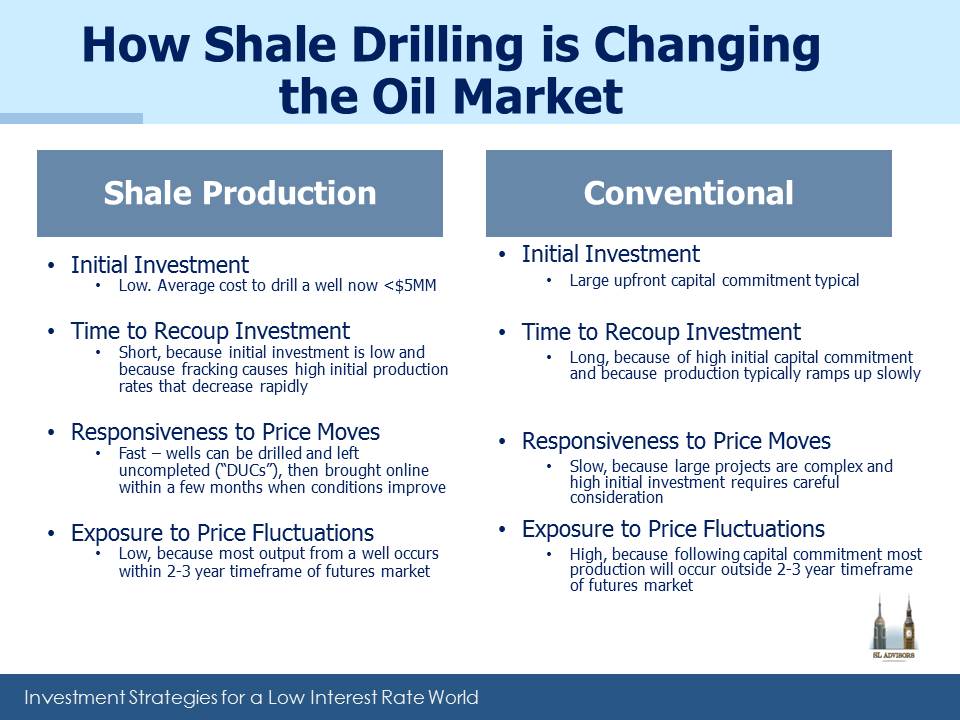
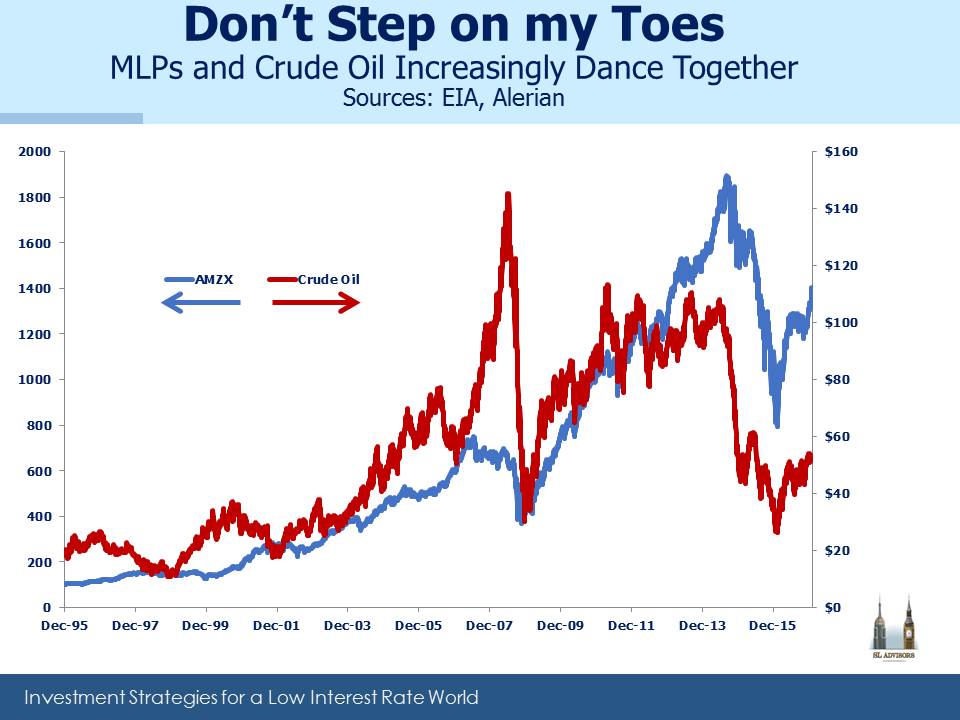
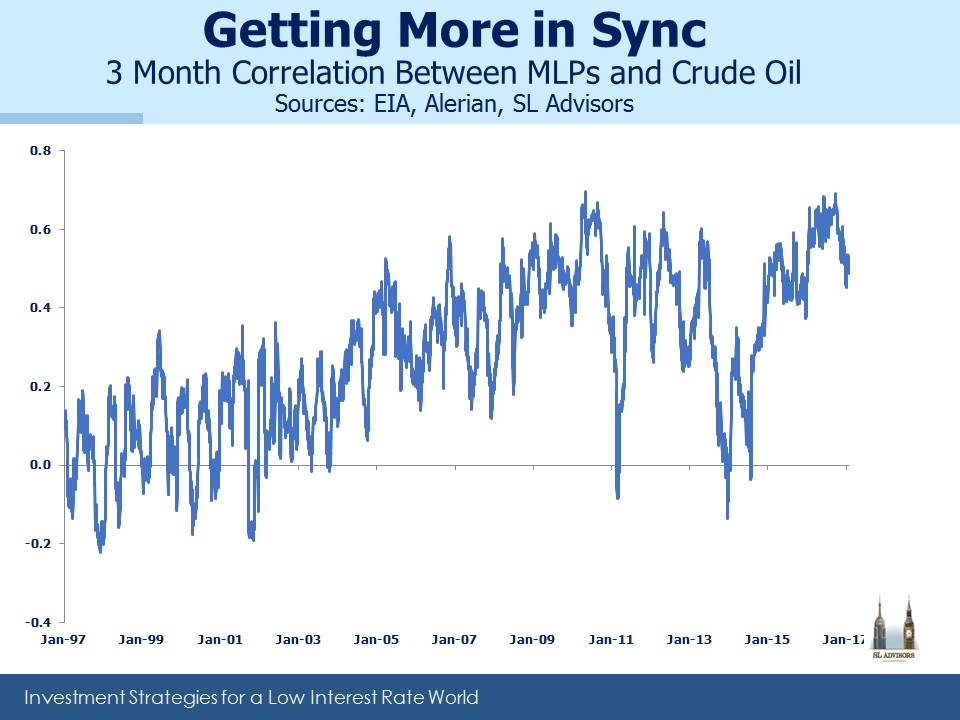

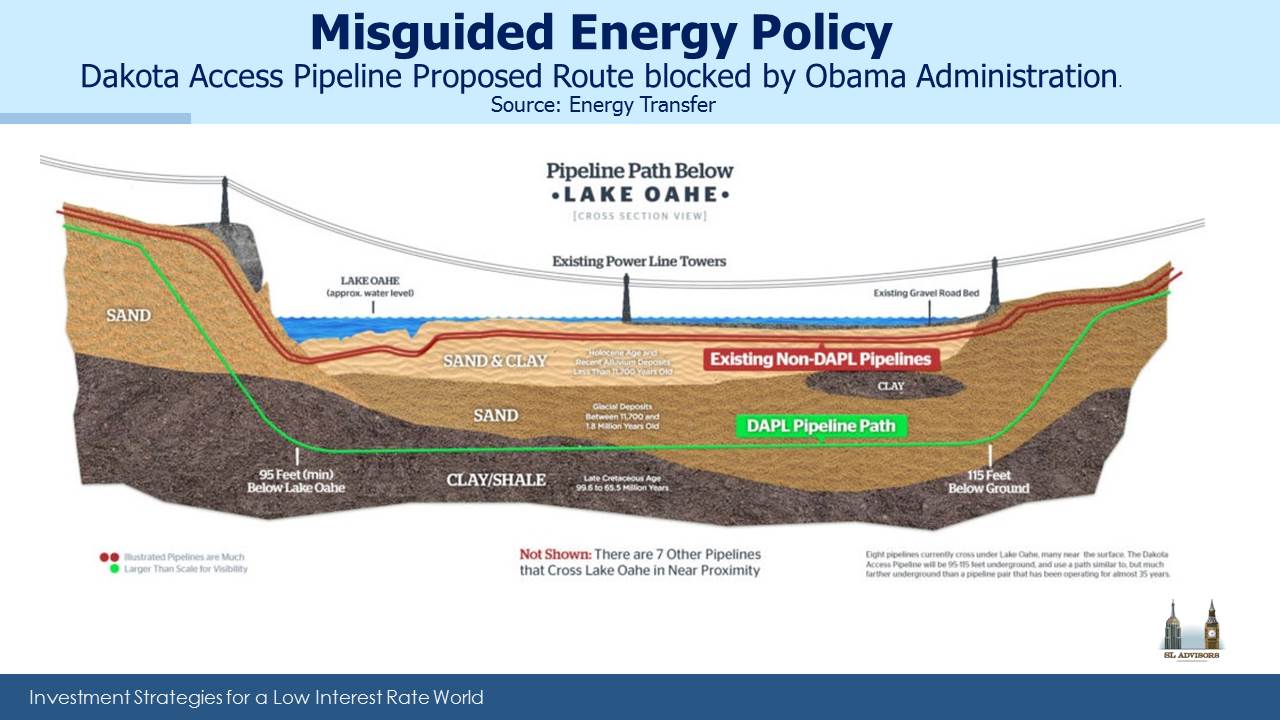
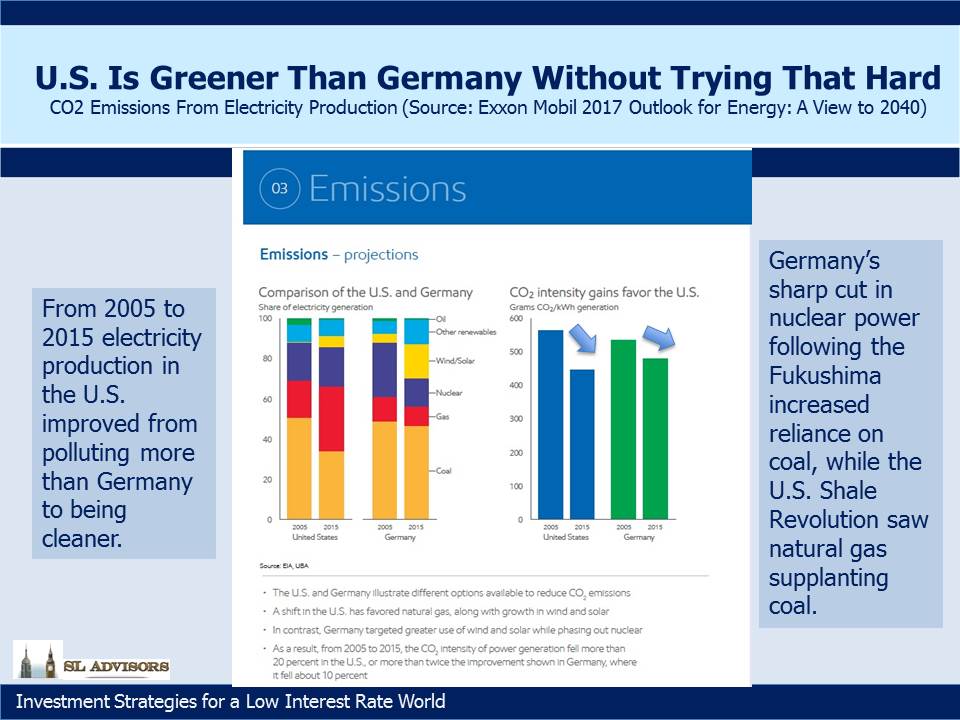
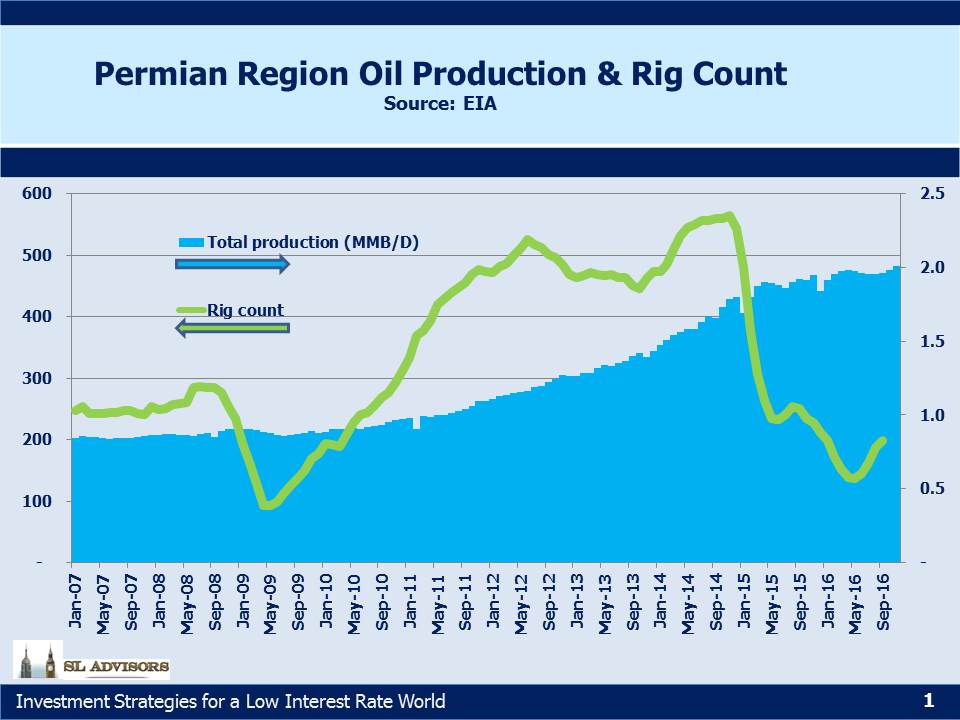
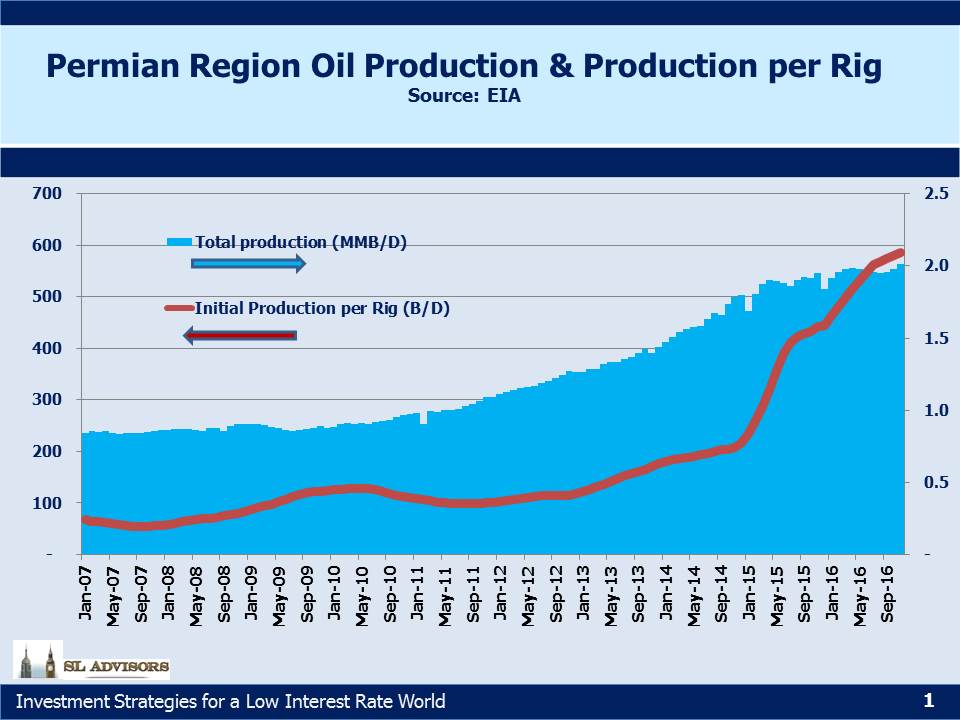

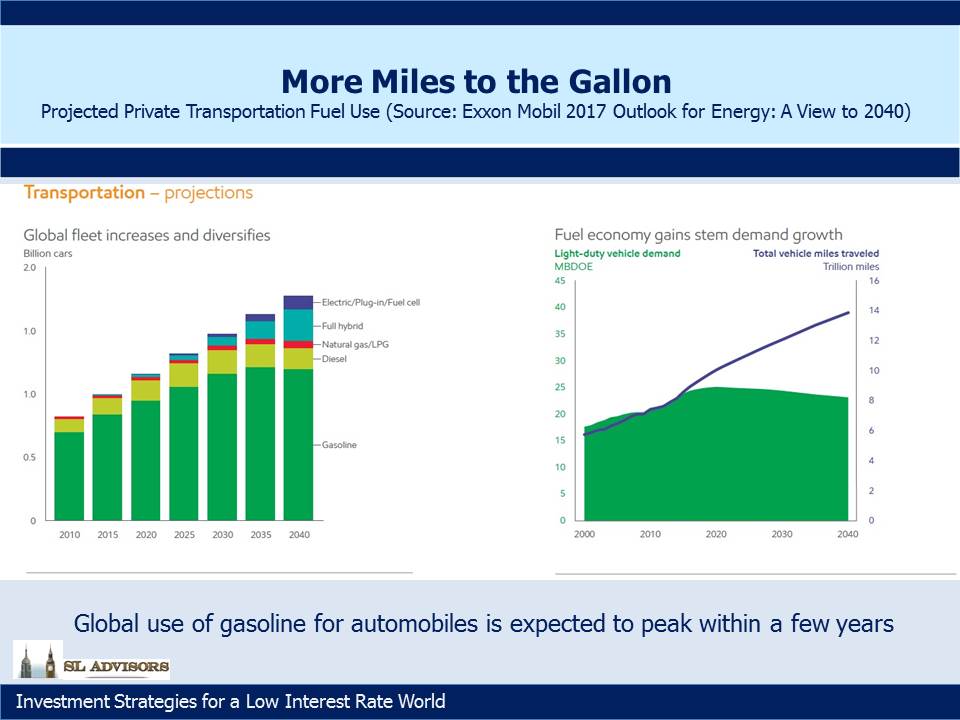
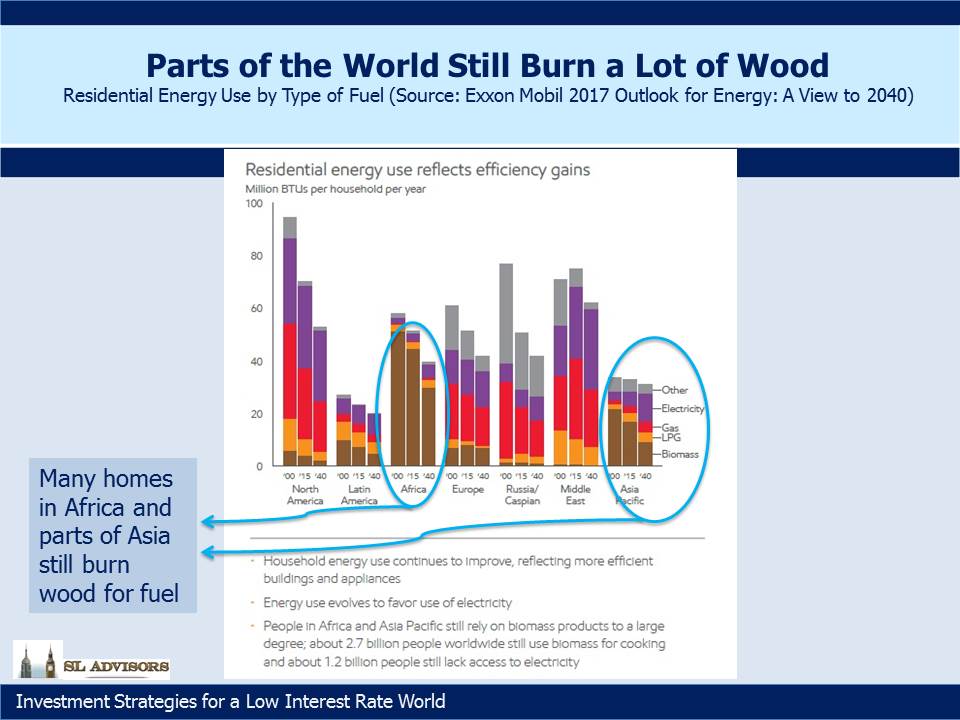
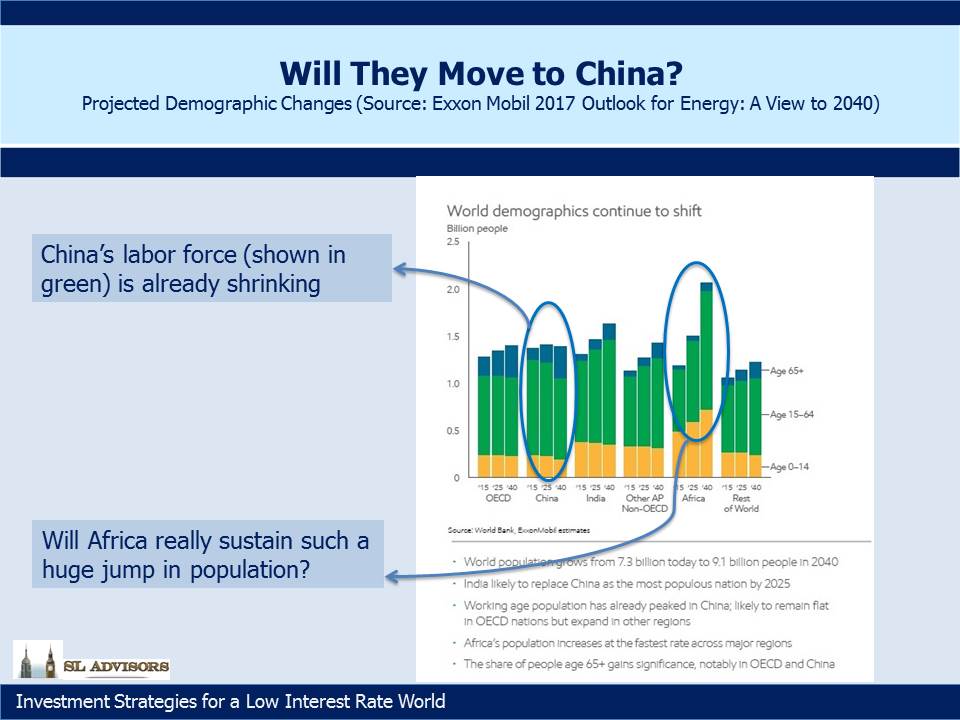

 he success of horizontal drilling and hydraulic fracturing (“fracking”) in the U.S. was releasing increasing amounts of crude oil from hitherto impenetrable porous rock. A consequence was that from 2011-2014 fully all of the increase in global demand for crude oil had been met by North American production (see
he success of horizontal drilling and hydraulic fracturing (“fracking”) in the U.S. was releasing increasing amounts of crude oil from hitherto impenetrable porous rock. A consequence was that from 2011-2014 fully all of the increase in global demand for crude oil had been met by North American production (see 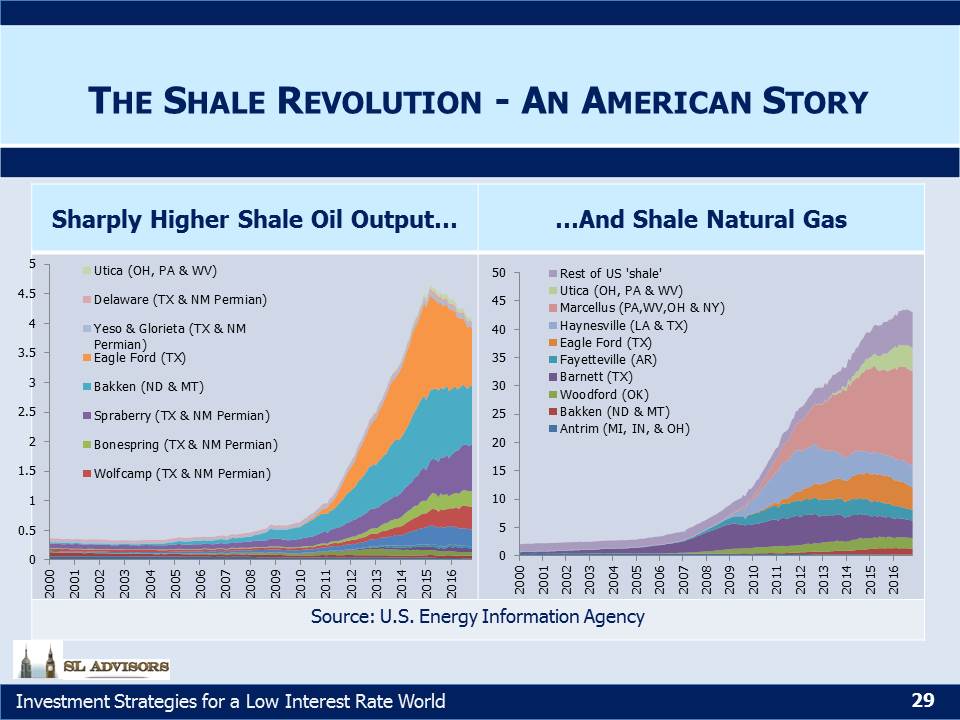
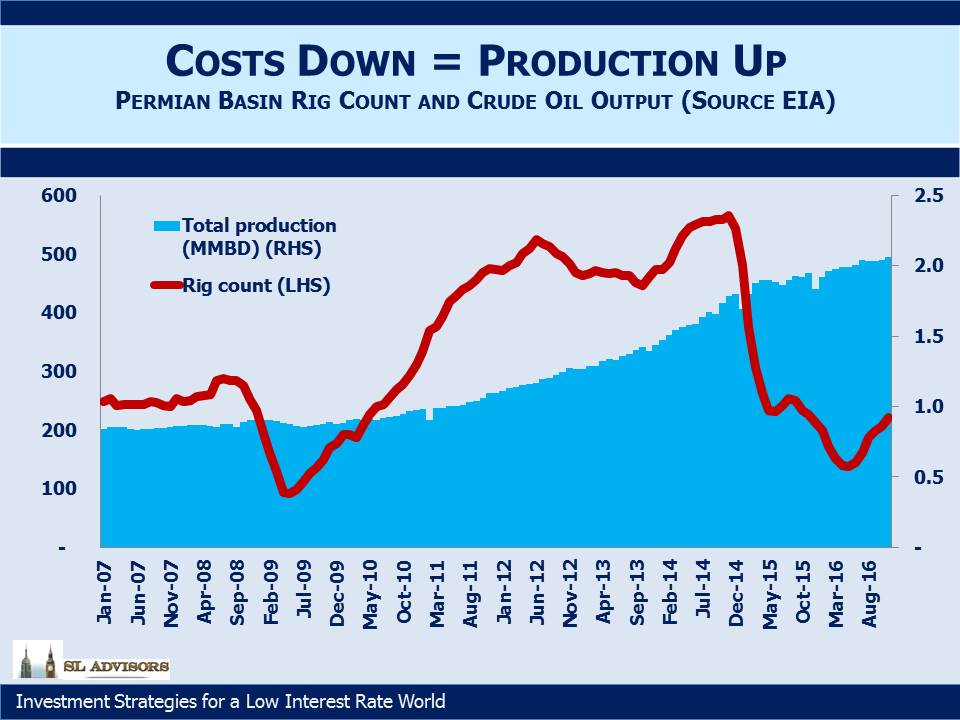
 Shale oil and gas production are upending the energy markets. The U.S. is not just the leader in this new technology, it’s virtually the only game in town. Oil, natural gas liquids and natural gas are known to exist in porous rock all over the
Shale oil and gas production are upending the energy markets. The U.S. is not just the leader in this new technology, it’s virtually the only game in town. Oil, natural gas liquids and natural gas are known to exist in porous rock all over the 